Comments / Questions (122)
![]() Laetitia wrote:
Laetitia wrote:
Please do you have a written pattern.
04.05.2025 - 12:21
![]() Lesley wrote:
Lesley wrote:
PLease can you help me with the A1 and A2 instructions - I have no idea what you are referring to Many thanks Lesley
26.04.2025 - 11:42DROPS Design answered:
Dear Lesley, A.1 and A.2 refer both to the diagrams you'll find at the bottom of the page. From the right side you first work A.1 then repeat A.2. From the wrong side, repeat A.2 reading from left towards right and finish with A.1. Read more about diagrams here. Happy knitting!
28.04.2025 - 09:31
![]() Kari Bølling Thorne wrote:
Kari Bølling Thorne wrote:
Strikker str 7/8. Skal A1 mønsteret, den ene masken strikkes gjennom hele omgangen, altså før A2, da 15 ganger? Forstår egentlig ikke hvorfor ikke denne ene masken er lagt inn i A2. Jeg har strikket de to første omgangene med økning/kast, men får ikke rapporten til å bli lik på hver side. Etter disse to omgangene med økninger, hvor mange masker skal det da være på pinnen?
03.04.2025 - 18:41DROPS Design answered:
Hej Kari, du starter med A.1 i den ene side og strikker kun A.1 der :)
08.04.2025 - 14:19
![]() Evi Schrödinger wrote:
Evi Schrödinger wrote:
Vielen Dank. Ich hab's jetzt kapiert. Hatte Probleme mit dem Lesen der Strickschrift. Alle weißen Kästchen müssen auf der Vorderseite rechts gestrickt sein!
01.04.2025 - 15:54
![]() Evi Schrödinger wrote:
Evi Schrödinger wrote:
Ich habe Problem mit Diagramm. Laut Anleitung werden die Reihen 4, 6 , 12 usw. rechts gestrickt. Von rechts nach links und dann von links nach rechts. Auf der Vorderseite erscheinen diese Maschen links. Auf dem Foto erscheinen sie aber rechts und deshalb glatt gestrickt
30.03.2025 - 21:03DROPS Design answered:
Liebe Frau Schrödiger, die 1. Reihe A.1/A.2 wird eine Hinreihe sein = rechts bei den Hinreihen; wenn man aber die 2. Reihe (9/10 + 11/12) oder die 6. Reihe (3/4 + 5/6 + 7/8) strickt, strickt man rechts bei den Rückreihen, so entstehen Krausrippen. siehe 2. Symbol im Diagram. Viel Spaß beim Stricken!
31.03.2025 - 09:20
![]() Evi wrote:
Evi wrote:
Ich habe Problem mit Diagramm. Laut Anleitung werden die Reihen 4, 6 , 12 usw. rechts gestrickt. Von rechts nach links und dann von links nach rechts. Auf der Vorderseite erscheinen diese Maschen links. Auf dem Foto erscheinen sie aber rechts und deshalb glatt gestrickt
30.03.2025 - 19:50
![]() Monique wrote:
Monique wrote:
Hoe zet je 6 nieuwe steken op onder de mouw?
08.03.2025 - 21:24DROPS Design answered:
Dag Monique,
Bij een van de video's die bij het patroon staan, wordt uitgelegd hoe je steken opzet aan de zijkant. Deze kun je ook gebruiken voor het steken opzetten onder de mouw.
09.03.2025 - 13:09
![]() Liz wrote:
Liz wrote:
I am knitting the "Agnes" cardigan and struggling with the increase rows. I am understanding A1 then the 5 garter stitches for the band but then get confused as to when to increase. Example. Row 6 has the increase at the start and my understanding is that you increase every 7th stitch. Do you increase on the 5th stitch of the band to start with then every 7th? Then with row 8 the increase shows at the end of stitch 8, so I am presuming you increase every 8th stitch. Can you please help me? Liz
13.02.2025 - 01:09DROPS Design answered:
Dear Liz, when working diagrams you will repeat A.2 and the increases in each A.2 as shown in diagram, so depending on the size: in first 3 sizes you increase first at the beg of each A.2 on 5th row, then at the end of each A.2 on 7th row, then at the beg of each A.2 on 9th row and so on, until you get 16 stitches in each A.2. Inserting a marker between each repeat can help you to keep tracking the number of stitches in each repeat. Happy knitting!
20.02.2025 - 12:20
![]() Ruth wrote:
Ruth wrote:
Thank you so much for your quick response to my question, I couldn’t believe you answered me so quickly, much appreciated ❤️
13.01.2025 - 13:01
![]() Ruth wrote:
Ruth wrote:
Hello, I’m knitting the size 3/4. In the last part of the yoke, instructions say to cast on 6 new stitches under both sleeves, when I’m done that row I have 12 extra stitches, can you tell me what I’m doing wrong? Thank you
13.01.2025 - 04:58DROPS Design answered:
Hi Ruth, The 6 cast-on stitches under each sleeve will leave you with 12 extra stitches on the row as you say, and this is correct. These new stitches are now part of the body and are worked as described in the Body section. Happy knitting!
13.01.2025 - 08:30
Agnes#agnescardigan |
||||||||||||||||||||||
 |
 |
|||||||||||||||||||||
Knitted jacket for children in DROPS Sky. The piece is worked top down with round yoke, lace pattern, stocking stitch and garter stitch. Sizes 3-12 years.
DROPS Children 34-9 |
||||||||||||||||||||||
|
------------------------------------------------------- EXPLANATIONS FOR THE PATTERN: ------------------------------------------------------- RIDGE/GARTER STITCH (worked back and forth): 1 ridge = Knit 2 rows. RIDGE/GARTER STITCH (worked in the round): 1 ridge = 2 rounds. Knit 1 round and purl 1 round PATTERN: See diagrams A.1 and A.2. Choose diagram for your size. The diagrams show all the rows in the pattern seen from the right side. INCREASE TIP-1 (evenly spaced): To work out how to increase evenly, count the total number of stitches on the needle (e.g. 72 stitches) and divide by the number of increases to be made (e.g. 17) = 4.2. In this example, increase by making 1 yarn over after approx. each 4th stitch. On the next row work the yarn overs twisted to avoid holes. INCREASE TIP-2 (for sides of body): Work until there is 1 stitch left before the marker thread, 1 yarn over, knit 2 (the marker thread sits between these 2 stitches), 1 yarn over = 2 stitches increased. On the next row work the yarn overs twisted to avoid holes. Then work the new stitches in stocking stitch. DECREASE TIP (for sleeves): Decrease 1 stitch on each side of the marker thread as follows: Work until there are 3 stitches left before the marker thread, knit 2 together, knit 2 (the marker thread sits between these 2 stitches), slip 1 stitch as if to knit, knit 1 and pass the slipped stitch over the knitted stitch = 2 stitches decreased. BUTTONHOLE: Work the buttonholes on right band (when the garment is worn). 1 buttonhole = start from the wrong side and knit together the 2nd and 3rd stitch from the edge, make 1 yarn over. On the next row knit the yarn over to leave a hole. The first buttonhole is worked after approx. 1 cm from the neck edge, then the next 5-5-5-6-6 buttonholes every 5-6-6-6-7 cm. ------------------------------------------------------- START THE PIECE HERE: ------------------------------------------------------- JACKET - SHORT OVERVIEW OF THE PIECE: The piece is worked back and forth with circular needle, top down. It is divided for body and sleeves. The body is continued back and forth with circular needle. The sleeves are worked in the round with double pointed needles/short circular needle. YOKE: Cast on 72-76-80-86-92 stitches with circular needle size 4 mm and Sky. Work 2 RIDGES – see description above – remember BUTTONHOLES on right band – see description above. Knit 1 row where you increase 17-19-21-23-24 stitches evenly on row - READ INCREASE TIP-1! = 89-95-101-109-116 stitches on needle. Knit 1 row from the wrong side. Insert a marker thread on this round and measure from here. Work according to diagrams A.1 and A.2 as follows from the right side: Work 5 band stitches in GARTER STITCH, work A.1 over 1 stitch, A.2 a total of 13-14-15-14-15 times on the row and then 5 band stitches in garter stitch. REMEMBER THE KNITTING TENSION! When diagrams A.1 and A.2 have been completed in height there are 219-235-251-263-281 stitches on the row. On the next row from the right side adjust stitch count to 219-235-253-261-283 stitches. Continue working stocking stitch until the piece measures 15-15-16-17-18 cm from marker thread. The next row from the right side is worked as follows: Work 5 band stitches in garter stitch, 30-32-35-36-37 stitches in stocking stitch (= front piece), place the next 44-48-51-53-62 stitches on a thread (= sleeve), cast on 6 new stitches under the sleeve, work 61-65-71-73-75 stitches in stocking stitch (= back piece), place the next 44-48-51-53-62 stitches on a new thread (= sleeve), cast on 6 new stitches, work 30-32-35-36-37 stitches (= front piece) and 5 band stitches in garter stitch. BODY: There are 143-151-163-167-171 stitches on the needle. THE PIECE IS NOW MEASURED FROM HERE! Insert 1 marker thread in the middle of the 6 new stitches which were cast on in each side. Work stocking stitch back and forth with 5 band stitches in garter stitch on each side. When the piece measures 3 cm increase 1 stitch on each side of each marker (= 4 stitches increased) READ INCREASE TIP-2! Repeat this increase every 3-4½-5½-6½-7½ cm a total of 3 times = 155-163-175-179-183 stitches on needle. Continue working until the piece measures approx. 15-17-20-23-26 cm (or to desired length, there is approx. 2 cm until finished measurements). Work garter stitch for 2 cm. Loosely cast off with knit. Cut and fasten the thread. SLEEVE: Place the stitches from the one thread on short circular needle/double pointed needles size 4 mm (= 44-48-51-53-62 stitches) and knit up 1 new stitch in each of the 6 new stitches on the body (= 50-54-57-59-68 stitches). Insert 1 marker thread in the middle of these 6 stitches. Work stocking stitch in the round until the sleeve measures 3 cm. Now decrease 1 stitch on each side of the marker thread - READ DECREASE TIP. Continue with stocking stitch and repeat the decrease every 4-4-4-4-3½ cm until you have decreased a total of 5-6-7-8-10 times = 40-42-43-43-48 stitches on needle. Work stocking stitch until the sleeve measures 23-28-31-35-38 cm. Work garter stitch for 2 cm. Cast off with knit. Cut and fasten the strand. Work the other sleeve in the same way. ASSEMBLY: Sew buttons onto left band. |
||||||||||||||||||||||
Diagram explanations |
||||||||||||||||||||||
|
||||||||||||||||||||||
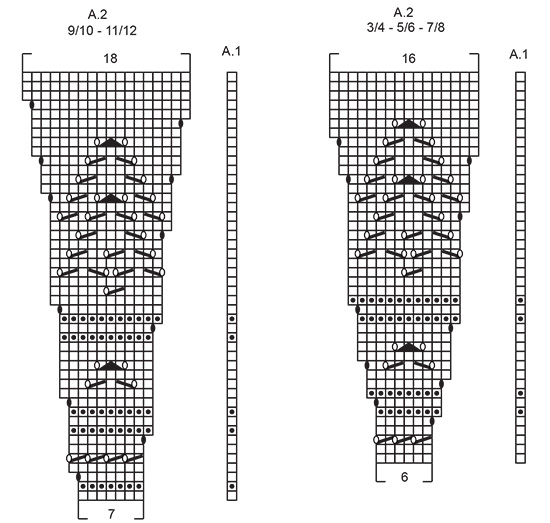
|
||||||||||||||||||||||
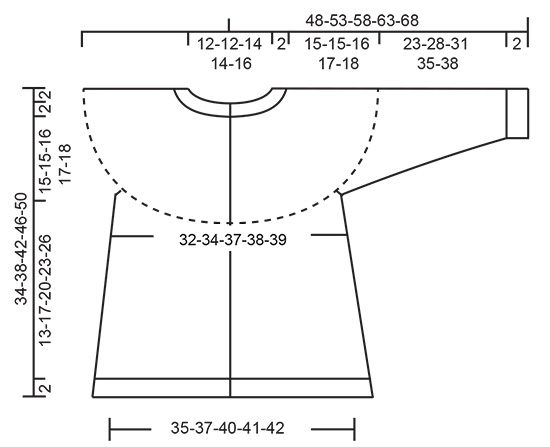
|
||||||||||||||||||||||
Have you finished this pattern?Tag your pictures with #dropspattern #agnescardigan or submit them to the #dropsfan gallery. Do you need help with this pattern?You'll find 26 tutorial videos, a Comments/Questions area and more by visiting the pattern on garnstudio.com. © 1982-2025 DROPS Design A/S. We reserve all rights. This document, including all its sub-sections, has copyrights. Read more about what you can do with our patterns at the bottom of each pattern on our site. |
||||||||||||||||||||||








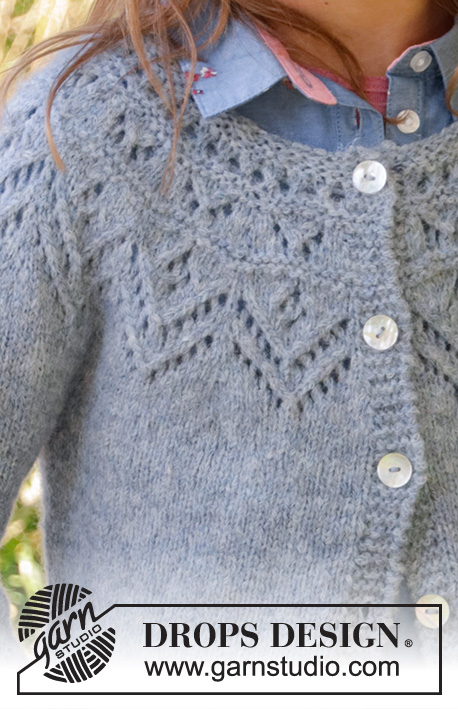

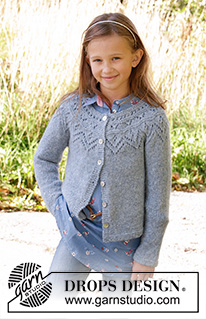
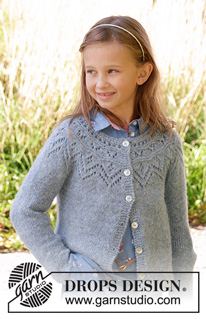
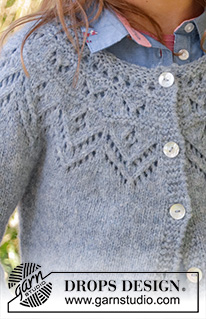





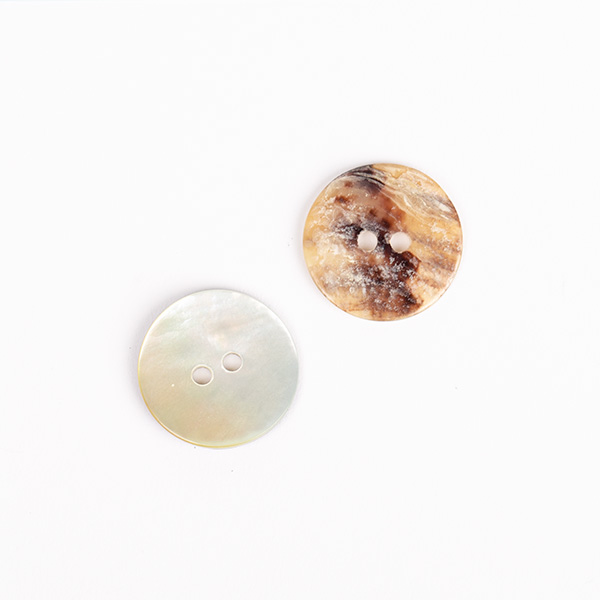





























































Post a comment to pattern DROPS Children 34-9
We would love to hear what you have to say about this pattern!
If you want to leave a question, please make sure you select the correct category in the form below, to speed up the answering process. Required fields are marked *.